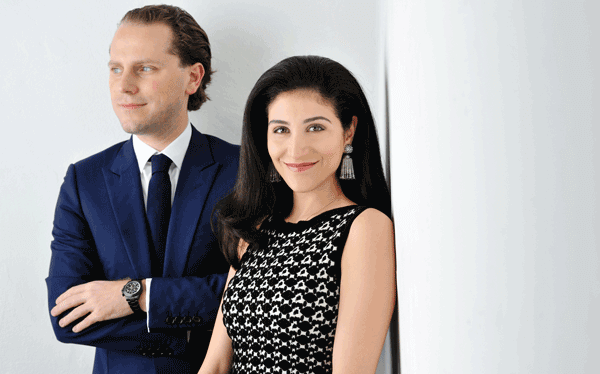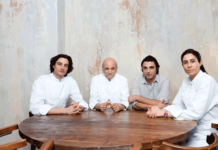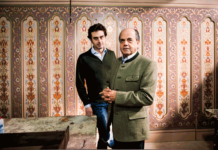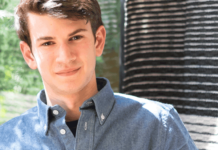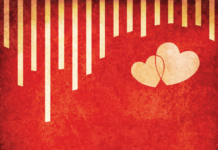Interview with Mr. Christian Hemmerle
In 1893, brothers Anton and Josep Hemmerle took over a goldsmith business in Munich, which counted amongst its clients the Bavarian Royal Family. Known for producing medals and orders, the brothers explored new materials and refined craftsmanship in pursuit of innovation. In 1904, in the heart of Munich, the family opened a store on Maximilianstrasse, which to this day, remains the central business location. Generation upon generation have brought new and unique ideas to the business, allowing it to flourish and expand.
Christian Hemmerle, of the fourth generation, joined the family business in 2006. He only fleetingly considered other career, as his attachment to the jewellery business was far too strong. Stefan Hemmerle made it a point to instil this love in his son by taking him around the world to hunt for precious stones and materials. Christian grew up admiring his father’s dedication. Today, two generations of Hemmerle spouses work side-by-side: Stefan and Sylveli Hemmerle of the third, and Christian and Yasemine of the fourth.
Tharawat spoke to Christian Hemmerle about the family, jewellery, and why innovation is family tradition.
[ms-protect-content id=”4069, 4129″]
The Hemmerle’s history is most defined by a strong generational orientation towards innovation and invention. Why do you think every generation of your family continued to take risks rather than rely on legacy and reputation?
We are creators. In order to remain at the vanguard of contemporary design, we have to take risks and move forward while, at the same time, remaining dedicated to our core values of craftsmanship and exceptional quality.Being a family business has allowed us to develop over generations, in many different ways. Our family has not only passed down the traditional techniques and methods of goldsmith and specialist knowledge regarding materials, but has also passed on a certain way of thinking and as strong set of values.
My father, Stefan, pioneered the concept we are renowned for today. He took Hemmerle in a completely new direction by setting a diamond in textured iron. I have learned from him not to be afraid of trying new things and experimenting. Thanks to my father, we are now clearly dedicated to a purely Hemmerle aesthetic. We consciously decided to steer away from broad audiences and create unique pieces with character that speak to individuals. Our craftsmanship has also evolved in parallel to how people use and wear jewellery, which is no longer just worn on occasions but is now a part of everyday life. How the piece feels is therefore important, and our jewellery has changed to suit this need.
Your father also revived seemingly forgotten techniques and brought them back into fashion. Was bringing back an old and established tradition riskier than inventing something entirely new?
We strike a balance between traditional and new techniques. Some of our traditional techniques are incredibly labour and time intensive, such as the old Austrian technique of knitting hand-drilled cut stones in the round over silk mesh. But new techniques, like working with concrete to create certain textures, are just as demanding. We believe it is important to preserve traditional skills while also developing new ones. We also re-work materials, like ancient carved jade, 18th century cameos, and Egyptian micro-mosaics, into contemporary designs to give them a touch of modernity.
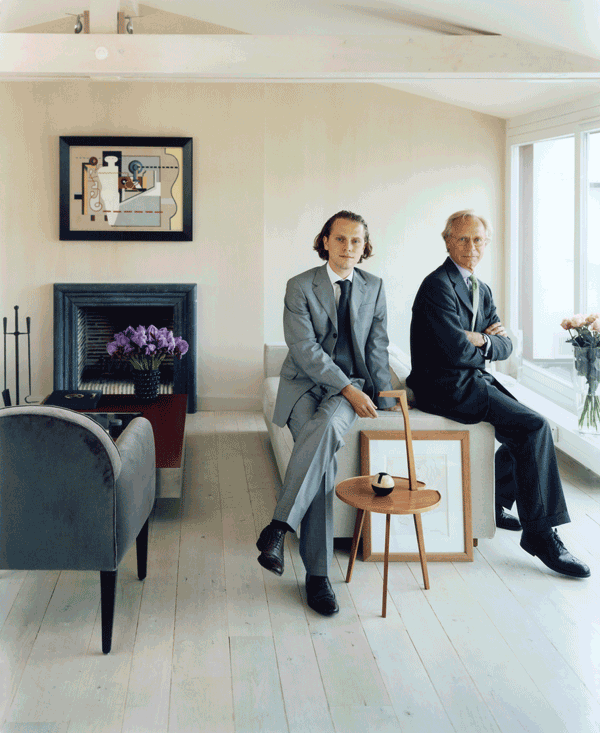
The first generation of Hemmerle consisted of two brothers; the second generation was lead by cousins; the third generation was yet another fraternal collaboration; and today, you and your wife, of the fourth generation, are running the company with your parents. What are the advantages and disadvantages of having two generations and two husband-wife teams work together?
We are very collaborative and are all involved in design. We think up creative ideas for pieces together and are fortunate enough to share a creative vision. Working with family allows you to be less reserved. You can be completely open with each other. An advantage of being two generations is that our knowledge and experiences are slightly different – tradition and heritage are combined with modernity and innovation.
Our work and family lives are inexorably intertwined. Each of us brings something different to the table and we are able to learn from one another. Actually, we are continually learning from one another. We travel around the world treasure hunting for unusual stones and materials. Our different experiences in the cities we visit influence our work. Interaction, discussion and community are an important part of our ethos.
The shop and atelier at Maximilianstrasse seem to lie at the heart of your family business. How great a role do you feel location has had in your success?
Location has been integral to our business. Having the atelier so close to home and shop is essential. All of our pieces are made in the workshop by our team of 18 craftsmen. This allows us to be involved in the creation of every piece and work closely with our goldsmiths. Nothing leaves the atelier without the approval of the family. The rooms are still filled with tools that would have been familiar to the first generation. We are seeing a change as well. Our collectors are becoming increasingly diverse and we sell by private appointment around the world. We also exhibit at art fairs, such as TEFAF in Maastricht and Masterpiece in London.
What do you believe are the opportunities and challenges that lie ahead, and what innovations do you have in store for us?
Our aim is to meet an aesthetic. The nature of our business and the time it takes to create our pieces means that we will always be specialised contemporary artists. A single piece can take up to 500 hours of work. We may even wait years to find the right colour of stone to complete a piece, which is a huge challenge. Our jewellery is constantly evolving yet we always remember and respect the past and our heritage. We would like to see high-jewellery more widely recognised as art. This has started to happen through important jewellery shows in museums, such as The Metropolitan Museum of Art in New York and the Victoria & Albert Museum in London, but there is still work to be done.
Tharawat Magazine, Issue 25, 2015
[/ms-protect-content]


